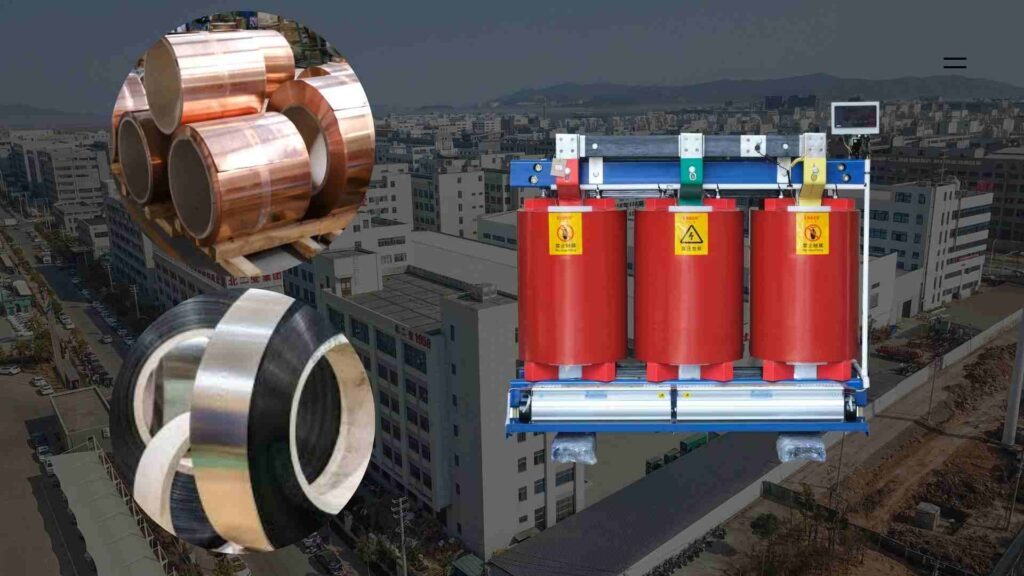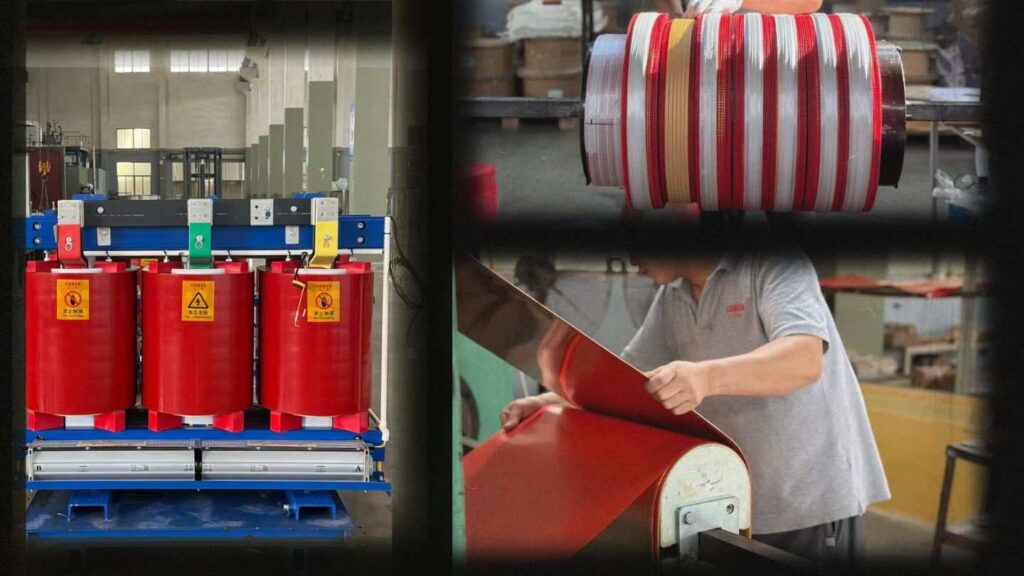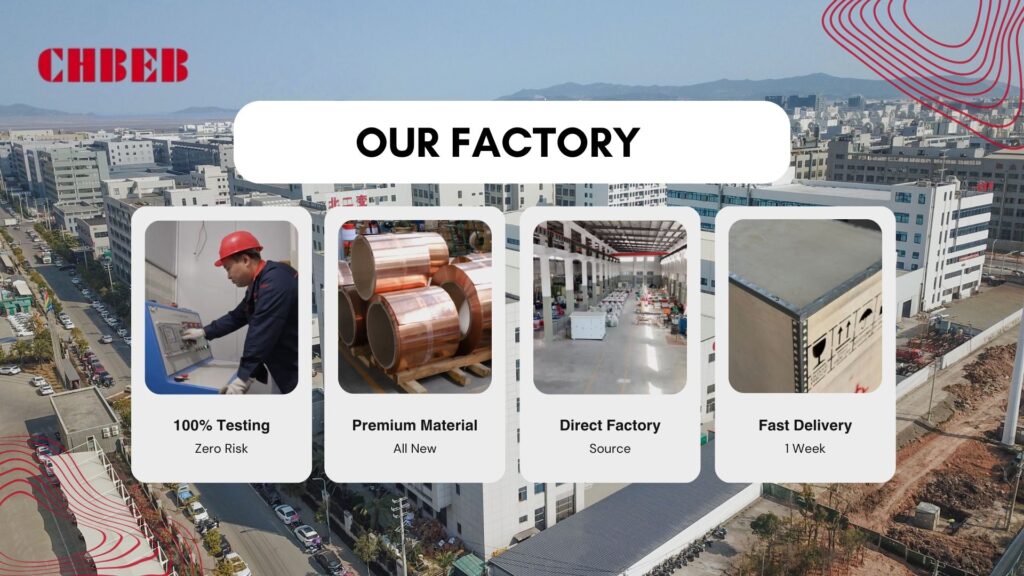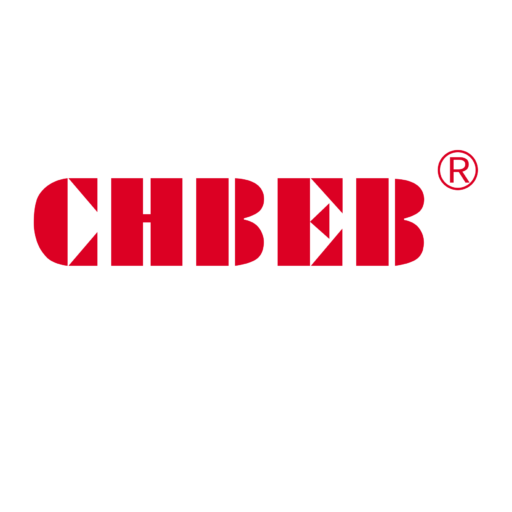The Copper Crisis: How Rising Prices in 2025 Will Shape the Dry-Type Transformer Market | CHBEB
Introduction:
In 2025, the price of copper is expected to reach new highs. Manufacturers and purchasers of transformers should brace themselves for tighter budgets and increasing material costs. Read this article to learn how to adjust and safeguard your project expenses in the face of the rising demand for copper caused by the energy transition.

The Direct Hit: Copper’s Crucial Role in Transformer Costs
The cost to make a transformer goes up the minute the price of copper goes up. Due of its central role in winding, even a little change in copper prices1 can have a significant impact on project finances.
🎥 CHBEB Copper Winding Process: Precision winding, pure copper conductors, and tight tension control — ensuring low loss and high efficiency in every transformer.
Assessing the Effect: The Role of Copper in Total Unit Cost
Copper is the most expensive material in a dry-type transformer, making up 35–45% of the total. An additional 2-4 percent to the final price per unit is added for every 10% rise in copper prices.
| Component | % of Total Cost | Cost Sensitivity | Notes |
|---|---|---|---|
| Copper Windings | 35–45% | High | Main cost driver, fluctuates with global metal prices |
| Core Steel (GOES) | 25–30% | Medium | Stable but rising due to grid expansion |
| Resin & Insulation | 10–15% | Low | Prices remain stable |
| Labor & Assembly | 10–20% | Medium | Depends on region and plant automation |
In a nutshell, copper is both the most important and most difficult to manage variable cost in transformer production.
Factors Influencing the Market: The Rising Cost of Copper Due to Renewable Energy
Electromagnetic fields are increasing the demand for copper. Copper is used three to five times more per megawatt for renewable projects, electric vehicle infrastructure, and smart grid enhancements. Copper will remain in short supply until at least 2025–2027 since new mines take a long time to open.
Strategic Adaptation: Evaluating Aluminum and Mitigating Costs
Manufacturers and customers are looking into aluminum windings2 as a way to minimize costs without compromising performance, especially with the recent spike in copper prices.

A Comparison of Copper and Aluminum (Price vs. Size): The Great Trade-Off
Although aluminum has a little poorer conductivity, it is less expensive up front. Your project’s kind, efficiency goals, and available area for installation will determine which one is best.
| Attribute | Copper Windings | Aluminum Windings |
|---|---|---|
| Conductivity | 100% | ~61% of copper |
| Weight | Heavier | ~40% lighter |
| Size for same kVA | Compact | 10–20% larger |
| Cost per unit | Higher | 20–30% lower |
| Thermal Expansion | Low | Higher (requires tighter joints) |
| Efficiency | Slightly higher | Slightly lower |
| Maintenance | Stable | Needs regular inspection |
Though it reduces prices, aluminum has the potential to increase energy losses and footprint. The overall economics of the project determine the optimal balance.
How Buyers Can Manage Price Volatility in Procurement Strategies
Project margins can be broken if copper price volatility is disregarded. As a precaution, smart procurement teams do the following:
- Set quotations with a validity period of 30-60 days and lock in rates early.
- Mix up your materials by thinking about aluminum and copper.
- Arrange for modular shipments and vary their arrival dates to control cash flow.
- Keep an eye on London Metal Exchange trends to foretell when prices will rise and fall.
- Think about efficiency, longevity, and OPEX as part of total ownership cost (TOC).
- .
👉 Learn more: Dry vs Oil Transformer Comparison
Long-Term Outlook: Efficiency Standards and Future Pricing
The worldwide trend toward efficiency standards that prioritize high-performance designs reliant on conductive materials will persist even if copper prices level out.

The Lifespan Cost: The Efficiency Penalty of Cheaper Materials
Transformer losses can be increased by using cheaper materials. The total cost of ownership increases by hundreds of kilowatt-hours for every 1% decrease in efficiency due to lifetime energy waste. Reduced losses over 25-30 years allow efficient copper-based designs to recoup their higher initial price.
Important notice for regulators: transformers are now mandated to reach efficiency criteria of IE2-IE3 by the EU EcoDesign regulation and IEC 60076, which means that essential infrastructure cannot use materials with low conductivity.
CHBEB — Reliable Partner for Distribution Transformers

With over 60 years of transformer manufacturing expertise, CHBEB has become one of China’s most trusted distribution transformer suppliers. The company operates two factories in Wenzhou, one in Nanjing, and an office in Beijing, ensuring both strong production capacity and responsive customer support.
What makes CHBEB stand out:
- Strict Quality Commitment: All raw materials are 100% new and high-grade — no recycled or downgraded components.
- Proven Reliability: A qualified supplier for the State Grid Corporation of China, with a spotless record of zero major accidents.
- 100% Product Testing: Every unit is fully tested before delivery to guarantee safety, efficiency, and long service life.
- Fast-Track Orders: Ability to fulfill urgent orders in as little as one week, helping customers meet tight project deadlines.
- Custom Inventory Planning: Flexible stocking and supply strategies designed to align with customer procurement schedules.
- Global Outlook: Rooted in China and expanding worldwide, CHBEB actively supports local agents and partners, including assistance with market-specific certifications.
- Flexible Customization: Tailored transformer designs for utilities, contractors, and industrial clients, with reliable quality and fast delivery.
👉 Looking for a distribution transformer manufacturer that combines Chinese manufacturing strength with international standards?Contact CHBEB for a tailored solution or Download our full transformer catalog here.
🎥 Take a tour of CHBEB — our manufacturing capabilities, quality control, and global vision.
Conclusion
The copper price surge of 2025 is reshaping how dry-type transformers are designed, manufactured, and procured. Buyers and engineers can no longer focus only on upfront cost — long-term efficiency, material stability, and lifecycle performance now define real project value.
While copper remains the premium choice for high-efficiency designs, aluminum windings can offer a practical alternative for medium-load or budget-sensitive projects when properly engineered to IEC 60076 and EU EcoDesign IE2–IE3 standards.
The best strategy for 2025 and beyond is to combine material diversification, short-term price locking, and long-term efficiency planning. In the end, the most cost-effective transformer isn’t always the cheapest — it’s the one that maintains stable performance, meets efficiency regulations, and minimizes total ownership cost over decades of operation.
Free CHBEB Transformer Catalog Download
Get the full range of CHBEB transformers in one catalog.
Includes oil-immersed, dry-type, pad-mounted, and custom solutions.
Quick Message
Request A free quote
We'd like to work with you
- +86 15558785111
- [email protected]
- +86 15558785111
What We Do
CHINA BEI ER BIAN (CHBEB) GROUP, with 218 million in registered capital, originated from Beijing Beierbian Transformer Group. Headquartered in Beijing for R&D, it operates major production bases in Nanjing and Yueqing, producing high-quality products.
Latest Product
address
BeiJing
No 3,RongJing East Road,BeiJing Economic Technological Development Area,BeiJing,China
JiangSu
No 7️Xiangfeng Road,Jiangning,NanJing,JiangSu,China
WenZhou
No.211, Wei 16 Road, Industrial Zone, Yueqing, Wenzhou, Zhejiang, China.
XiangYang Industrial Zone ,YueQing,WenZhou,ZheJiang,China
contact us
- [email protected]
- +86 13057780111
- +86 13057780111
- +86 15558785111
Copyright © Bei Er Bian Group


